It’s nearly Black Friday/Cyber Monday season, basically Super Bowl Sunday for retailers, particularly eCommerce. Even before COVID-19 began closing brick and mortars, consumers were already showing a preference for moving their shopping online. According to Adobe, Cyber Week 2021 (from Thanksgiving Day through Cyber Monday) has drove a total of $33.9B in online spend.
With opportunity, however, comes competition, as well as high stakes. Being the biggest shopping days of the year, it can be challenging to stand out to consumers as their best option. Combine that with the fact that holiday season sales can often make or break a business year, so marketers need to be prepared.
Still haven’t finalized your holiday plans? Don’t worry. It’s not too late. This guide to Black Friday/Cyber Monday will give you everything you need to prepare your store and make this year your biggest holiday season ever.
Make Sure Your Website Is Running Smoothly
Call it a symptom of our low attention span culture, but consumers can and will abandon your site if the process isn’t as smooth as possible. Before the holiday rush, you want to run a full site audit to ensure that you’ve minimized or eliminated any potential roadblocks to a customer making a purchase.
1. Check Your Site Speed
Run a site speed test to get a full rundown on how well your site is working. There are plenty of services out there, but a simple option is Google’s Test My Site, which is free. The report will give you a complete overview of the recommended changes customized to your site, as well as the potential impact of improving your speed. While it might seem minor, a study from Deloitte shows that improving your load time by 0.1s can boost conversion rates by 8%!
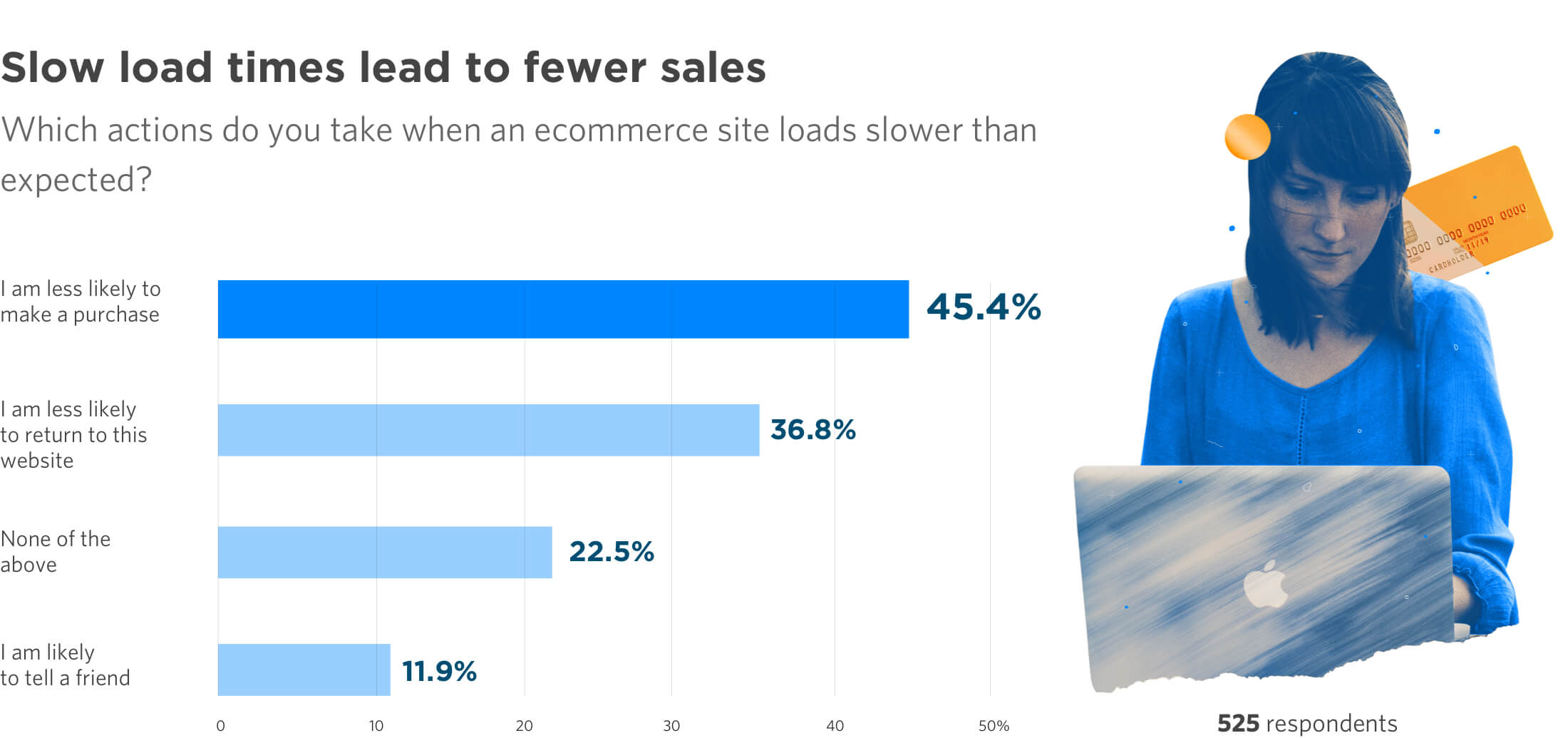
(Source: Unbounce – Page Speed Report)
2. Optimize For Mobile
Granted, this tip should be a high priority for any retailer during any season. However, last year, nearly 40% of Black Friday sales were placed via smartphone, so if you’ve never put in the time to make the proper optimizations, now is the time.
The most basic fixes boil down to simplifying your site navigation. Ensure that menus and search boxes are above the fold and easy to find. Make sure fonts are big enough for users to read without having to zoom in. Place all buttons in prominent areas, so there’s no confusion for the user.
Additionally, look for places you can reduce page weight, as long page loads have an even more pronounced effect on mobile. You don’t want to overload someone’s smartphone with large data downloads, so try to keep pages under 1,000 KB if possible. One potentially easy fix is to remove the ever so popular automatic image carousel. Most users don’t make it past the first slide, so use that real estate to promote your sale.
3. Ensure A Frictionless Conversion Journey
Even after a user has put an item into their cart, the journey is far from over. In recent years, the abandoned cart rates on Black Friday and Cyber Monday were roughly 80%, so to maximize your revenue, you need to make this process as seamless as possible.
It’s all too common for a user to begin the checkout process, only to feel too overwhelmed or lazy to fill in all their contact and payment information, resulting in users checking Amazon for the same or a similar product where they’re more comfortable. Rather than fight against this (or pay the full Amazon commissions), consider implementing PayPal, Amazon Pay, ApplePay, or GooglePay and enable them to complete their purchase with just a few clicks.
On the subject of seamless checkout, Buy Now Pay Later (BNPL) continues to trend upward with each passing year. On Cyber Monday 2021, usage of BNPL services saw a bump with revenue up 21% year over year and orders up 1% year over year. Consider this addition to your checkout process, as this feature is likely to continue its upward trend, notably within millennial and gen z demographics.
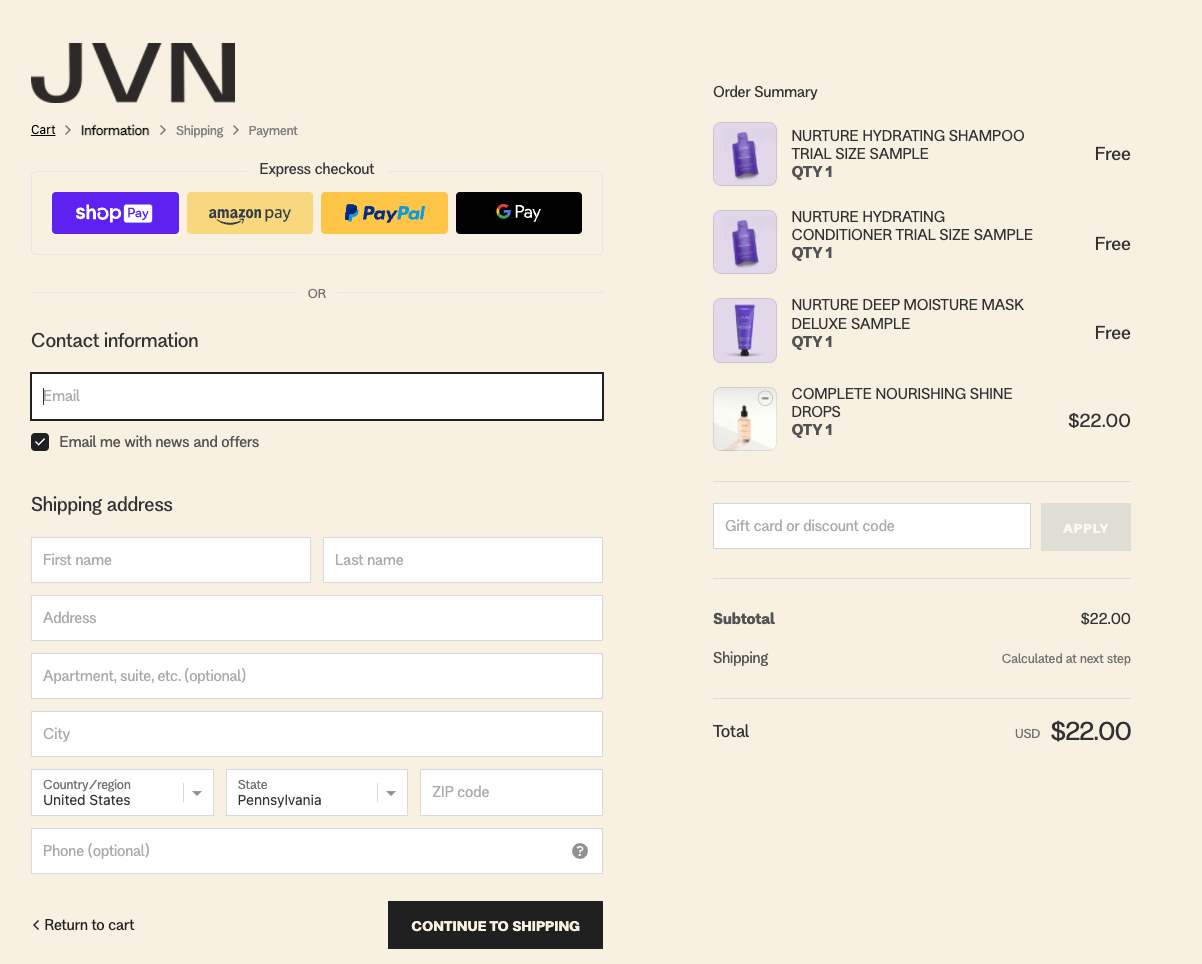
Planning Your Deal and Promotion Plan
Again, the competition during this time of year is fierce. You need an offer that’s enticing enough to stand out while every one of your competitors are also offering huge sales.
1. Start Early
This may come as a surprise to many of you last-minute Christmas shoppers, but many customers start looking for deals as early as October. Especially in 2022, where retailers have opted for online sales rather than in-store. While it’s good much of the madness and pressure is taken off the single day, it does create some extra competition.
With that in mind, don’t feel the need to wait until the day after Thanksgiving to launch. Often, companies launch their promotions the first day of November, stretching their promotions two entire months. While customers are seeing deals and considering options, make sure your deal is at least in the mix before they start making financial decisions.
2. Apply the Right Discount
With so much deal competition during this time, you want to make sure your offer stands out. On average, it takes an average discount of 50% to convince American shoppers to shop a Black Friday sale, so keep that number in mind as somewhat of a benchmark when deciding on your offer.
However, don’t let that number intimidate you. If your margins are tight and 37% (or more) would be unprofitable, there are other ways to still make an impact. For example, that 37% is just for Black Friday specific discounts. As retailers start offering sales earlier and earlier, the discounts are slightly lower and average closer to 20%. If economics are an issue, you can make up for it with timing.
3. Reward Your Best Customers
Another powerful lever in the battle for attention during Black Friday is loyalty. Your customers are a powerful ally, as they’ll be the ones most likely to share the products they love with others (or use these special sales as their own special “Treat Yo Self” day).
To maximize your Black Friday/Cyber Monday return, reward these customers. Tease them with hints of your upcoming sale, then surprise and delight them with a special invitation to shop early, ensuring they’re able to get their favorite products while they’re still in stock.
4. Make Your Deal Prominent On Your Website
While your returning customers may be arriving through email or a social media post where you’ve called out your big sale, new customers likely won’t have the same customer journey. In these cases, you need to make sure they know the details as well, by displaying discounts clearly throughout the site. It should be the first thing they see on the homepage, but consider adding a header or footer to each landing page, so the deal is visible no matter what path the customer took. Additionally, since they may lack the details of how long your sale is running, add a countdown banner to increase urgency.
Prep Your Marketing Channels
You could have the strongest offer in the market, but it doesn’t mean anything if no one sees it. Your marketing channels and tactics will ensure that you’re getting your offer in front of the people most likely to buy.
1. Prep Your Email Flow in Advance
As mentioned earlier, your existing customers and your email list are going to be one of your most impactful channels. Don’t take any chances here and test your emails well in advance in deliverability. As always, continue A/B testing subject lines and email content, but you should have generated enough learnings during the year to only be testing your best performers at this point.
Additionally, consider if and how you want to potentially send different emails to different segments. What messaging would you use for existing customers vs. ones who have never bought but are still on your mailing list? Of your existing customers, think of how you could segment them differently and how that changes your messaging: What items have they purchased in the past? Have they bought from your store just once or more than once? How does gifting potentially factor in?
Also, think about your email cadence, and how timing will appeal to different types of consumers. We’ve discussed launching in advance of Black Friday to appeal to the early bird deal hunters. You’ll of course email to announce the deal, as well as remind consumers when the deal is ending and push urgency with a “Last Chance” email. But what about the procrastinators? One popular tactic is to keep your deal beyond the holidays, with a “surprise” extension, letting those who missed out still take advantage of a great deal during a time where there are potentially less available options.
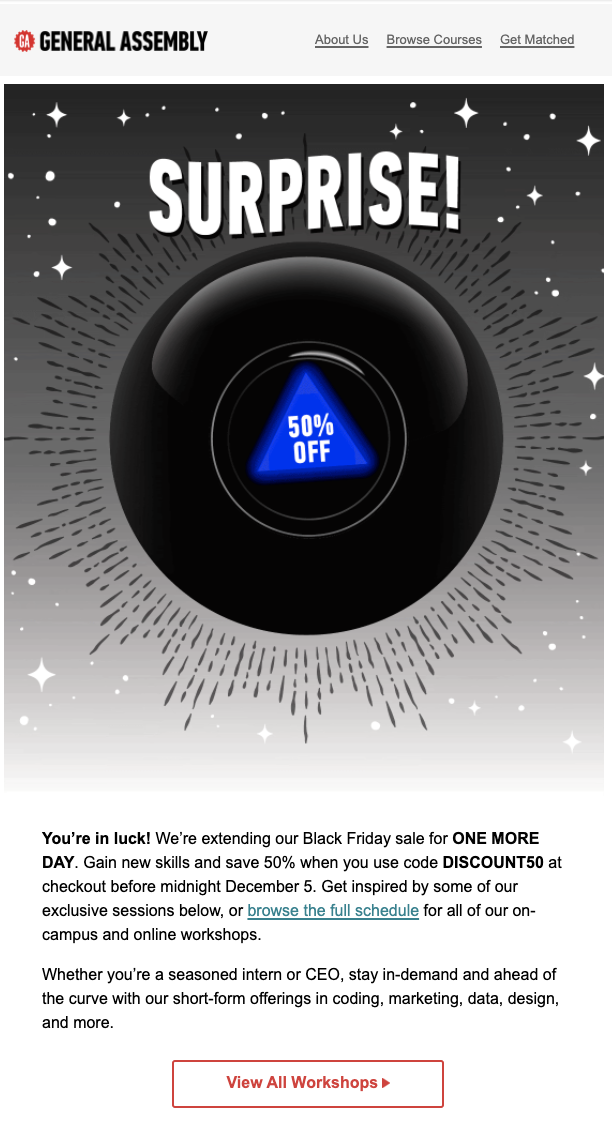
2. Don’t Miss Out On SMS
If you’re doing email marketing well, your open rates are probably around 20%. Maybe a bit higher, but not much. Compare that to the 98% open rate of SMS, and you see why so many marketers are beginning to use this channel.
If you’re worried that SMS is too intrusive, don’t. 75% of consumers are ОК with receiving SMS messages from brands, assuming they’ve opted in.
SMS was a big hit for many retailers in 2022, and if you’ve been collecting phone numbers, consider adding them to your marketing plan. Beyond just the high open rates, consumers like the fact that they seem more personal, almost like getting a text from a friend. As a best practice, keep your messages short and to the point, provide links when applicable, and give consumers an easy way to opt-out if they so choose.
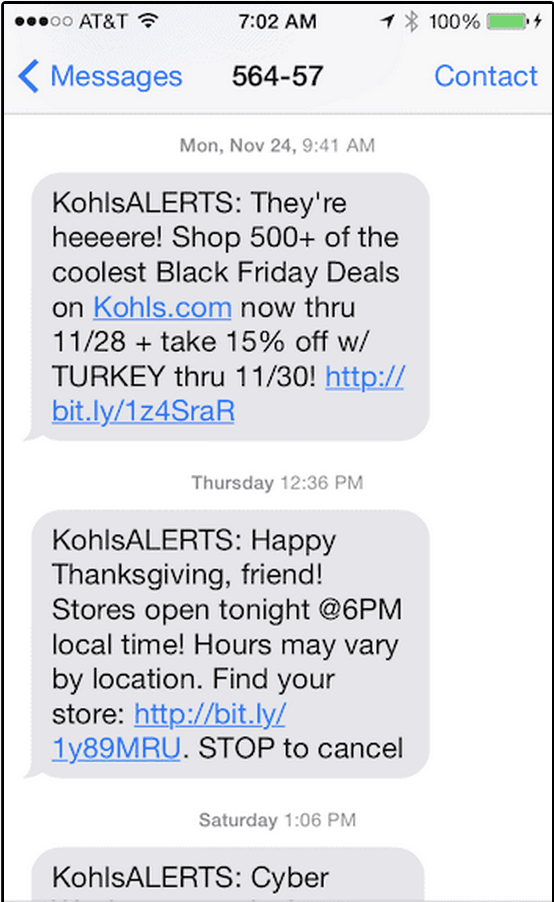
3. Paid Social Advertising
Paid social is a powerful part of any media mix, so if you haven’t been using it, now is the time to start. This channel can be leveraged for both upsells to existing customers, as well as the acquisition of new ones.
To reach your existing customers (to ensure they see your offer), target them using either pixel tracking or uploading customer data to build an audience. This customer data can also be used to create lookalikes, allowing you to extend your campaign’s reach, but maintain efficiency by only showing ads to customers who are very likely to be interested in your product.
4. Launch Google Shopping Listings
In April of 2020, Google announced that they were expanding Google Shopping to include free listings (in green) for retailers, where previously, the listings were for paid advertisers only (in red). Because it’s a free channel with a potentially large amount of scale, it’s a no brainer for brands to include their good within these listings.
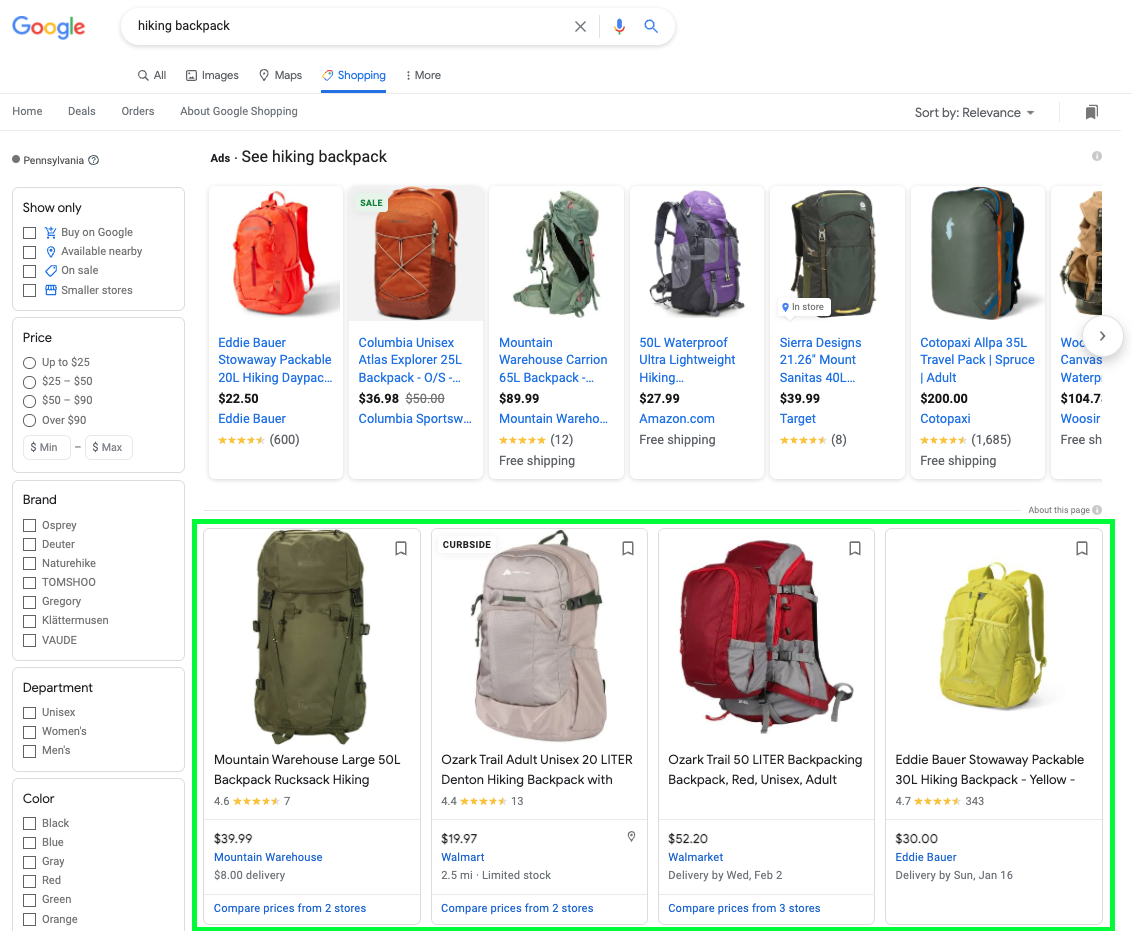
Set up a Google Merchant Center account and connect your product feed. From there, ensure your product names and descriptions are optimized, and your pricing and shipping details are accurate. Get started early so you have time to optimize and outrank your competition.
Note: In 2022, Google will no longer allow for smart shopping campaigns, and will replace them with Performance Max campaigns. Here’s the latest scoop on these campaigns and how to use them in your marketing strategy.
Looking Ahead to Black Friday & Cyber Monday in 2022
The past few years have been unpredicatable, and we only expect that to continue through the Holiday Sale Season. Brands have been trying to one-up each other year over year during this time, and we fully anticipate retailers to try to maximize their sales with one final holiday push.
While in-store shopping returned in 2021, online shopping continues to be the shopping medium of choice, as online will continue to be main event of 2022 sales. If you follow the above principles, properly prepare, and get a little creative, 2022 can still be your biggest Black Friday and Cyber Monday yet!






